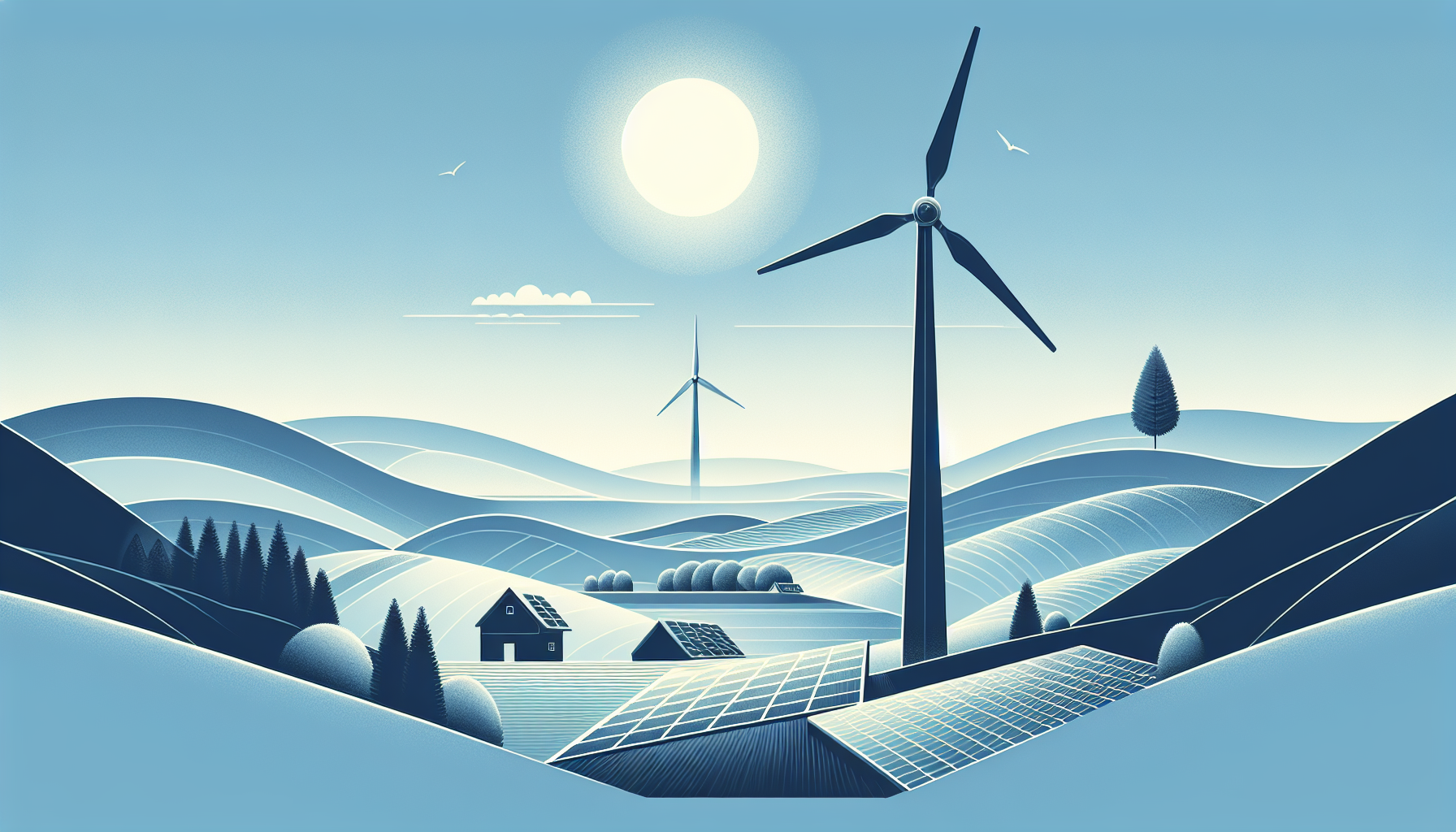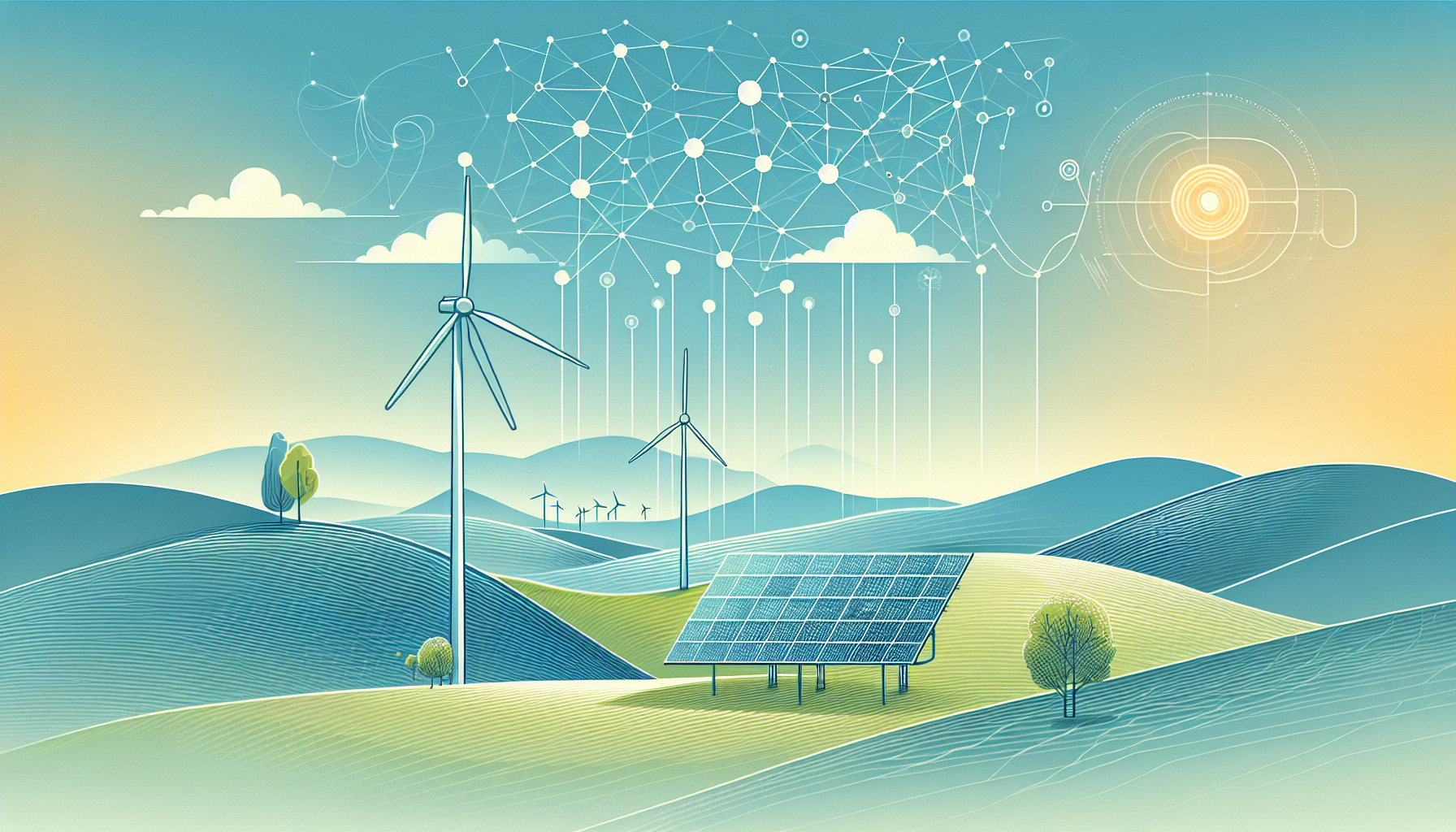We all know how crucial renewable energy is for a sustainable future, but figuring out how to integrate it can feel like solving a Rubik’s cube blindfolded, right? It’s definitely a puzzle worth pondering, especially when we want to make the most of what the sun, wind, and water have to offer.
But hang tight! If you stick with me, I promise you’ll discover some engaging prompts that can guide you through the complexities of renewable energy integration. You’ll be armed with the right questions to tackle challenges, assess resources, and design effective systems in no time.
From understanding the basics to exploring future trends, we’ve got a lineup of topics that will make your journey into renewable energy a breeze. Get ready to dive in and make a difference!
Key Takeaways
- Renewable energy integration involves adding clean energy sources like solar and wind to existing power grids.
- Common challenges include grid stability and regulatory barriers, which can be addressed through smart strategies and energy storage solutions.
- Assessing renewable energy resources is key for evaluating locations for solar or wind projects.
- Effective system design considers local energy demand and resource availability.
- Understanding policies and regulations is critical for the success of renewable energy initiatives.
- Community engagement is essential; involving local stakeholders boosts project support and effectiveness.

Top ChatGPT Prompts for Renewable Energy Integration
Integrating renewable energy into our current energy systems can be daunting yet rewarding.
Using ChatGPT can simplify the process with tailored prompts that guide you through various aspects of renewable energy integration.
Here are some useful prompts you can start with:
- “Outline the steps for effective integration of renewable energy into an existing power grid.”
- “What are the best practices for using AI to optimize renewable energy management?”
- “List the potential benefits of integrating renewable sources of energy in urban environments.”
Understanding Renewable Energy Integration
Renewable energy integration refers to the process of incorporating clean energy sources like solar, wind, and hydro power into the existing utility grid.
It involves adapting current infrastructure to accommodate these resource-efficient technologies.
By integrating renewable energy, we can reduce our reliance on fossil fuels and lower greenhouse gas emissions.
The benefits include enhanced energy security, diversification of energy sources, and economic growth through job creation in the renewable sector.
Here’s a prompt you can use to learn more:
- “Explain how renewable energy integration affects utility grid operations and overall efficiency.”
Common Challenges in Renewable Energy Integration
While integrating renewable energy offers multiple benefits, it comes with its own set of challenges.
One major hurdle is ensuring grid stability, as renewable sources can be intermittent.
Energy storage solutions are crucial to overcoming this issue, enabling energy to be stored for use when demand peaks.
Additionally, regulatory barriers can slow the integration process and complicate the adoption of new technologies.
Here are some prompts to help address these challenges:
- “Identify the top barriers faced during the integration of renewable energy in local grids.”
- “What strategies can be implemented to ensure grid stability with high levels of renewable energy?”
Prompts for Assessing Renewable Energy Resources
Assessing renewable energy resources is essential to understanding potential energy generation from sources like wind and solar.
To evaluate the viability of a location for renewable energy projects, thorough resource assessments are necessary.
For instance, solar energy assessments can involve analyzing sunlight exposure and climatic conditions, while wind resource evaluations look at wind patterns and speeds.
Using ChatGPT can streamline this assessment process with effective prompts. Consider the following:
- “Describe the methods used to conduct a solar energy resource assessment in a specific location.”
- “What factors should be evaluated when assessing potential wind energy resources for a new project?”
- “List the tools and technologies best suited for conducting renewable energy resource assessments.”

Prompts for Designing Renewable Energy Systems
Designing renewable energy systems is about creating efficient setups that can harness clean energy sources effectively.
Considerations for designing these systems include the energy demands of the site, the type of renewable resources available, and how to integrate these systems within existing infrastructure.
Here are some prompts you can use to explore system design with ChatGPT:
- “Outline the key components necessary for designing a grid-connected solar power system.”
- “Explain how to integrate wind turbines into an existing energy grid, considering local wind patterns.”
- “Describe the process for designing a hybrid renewable energy system that combines solar and wind power.”
- “What software tools are available for modeling renewable energy systems?”
- “List the best practices for optimizing a renewable energy system’s efficiency.”
Prompts for Policy and Regulation in Renewable Energy
Understanding policies and regulations is crucial for the successful implementation of renewable energy projects.
Government incentives, compliance standards, and energy regulations can significantly affect project outcomes.
Here are some constructive prompts to use with ChatGPT:
- “Identify key federal and state policies that support renewable energy deployment in my area.”
- “What are the regulatory barriers facing new renewable energy projects and how can they be navigated?”
- “Explain how different countries’ regulations impact the adoption of renewable energy technologies.”
- “List examples of successful government incentives for renewable energy initiatives.”
Prompts for Community Engagement in Renewable Energy Projects
Community engagement is vital for the success of renewable energy projects, as local support can ensure smoother implementation.
Involving stakeholders from the beginning can lead to better project outcomes and increased public support.
Here are some practical prompts you can use for community engagement:
- “Describe effective strategies for engaging local residents in renewable energy project discussions.”
- “How can social media campaigns raise awareness about new renewable energy initiatives?”
- “List methods for incorporating community feedback into the planning stages of renewable energy projects.”
- “Illustrate how to create participatory planning sessions for renewable energy initiatives.”

Prompts for Monitoring and Evaluating Renewable Energy Performance
Monitoring and evaluating renewable energy performance is essential to ensure systems operate efficiently and meet energy goals.
This involves tracking energy output, system efficiency, maintenance schedules, and overall performance metrics.
Here are some helpful prompts to consider for this area:
- “List the key performance indicators (KPIs) for monitoring solar energy systems.”
- “Explain how to assess the performance of a wind turbine over time.”
- “What tools can I use for real-time monitoring of renewable energy systems?”
- “Identify the common challenges faced during the evaluation of renewable energy project performance.”
- “Outline a step-by-step approach to creating an energy performance evaluation report.”
Future Trends in Renewable Energy Integration
As we look ahead, several trends are shaping the future of renewable energy integration.
One major trend is the continuous advancement of smart grid technologies which enhance energy distribution efficiency.
The focus on energy storage solutions is also growing, enabling better management of intermittent renewable resources.
Here are some prompts to explore these upcoming trends:
- “What innovations in renewable energy technology will impact integration in the next decade?”
- “Discuss how the rise of electric vehicles will influence renewable energy integration strategies.”
- “Identify the role of artificial intelligence in optimizing renewable energy systems for the future.”
- “How are decentralized energy systems reshaping the renewable energy landscape?”
- “Describe the impact of climate change policies on the future of renewable energy integration.”
FAQs
Renewable energy integration is the process of incorporating diverse renewable energy sources, such as solar and wind, into the existing energy grid to enhance efficiency, reduce carbon emissions, and ensure a reliable energy supply.
Common challenges include grid stability, energy storage limitations, fluctuating energy outputs, regulatory hurdles, and the need for infrastructure upgrades to accommodate decentralized energy sources effectively.
Communities can engage through participatory planning, public forums, educational initiatives, and establishing partnerships with local governments and organizations to promote awareness and support for renewable energy adoption.
Future trends include advances in energy storage technologies, increased use of smart grids, greater reliance on artificial intelligence for energy management, and enhanced regulatory frameworks promoting renewable energy sources.
